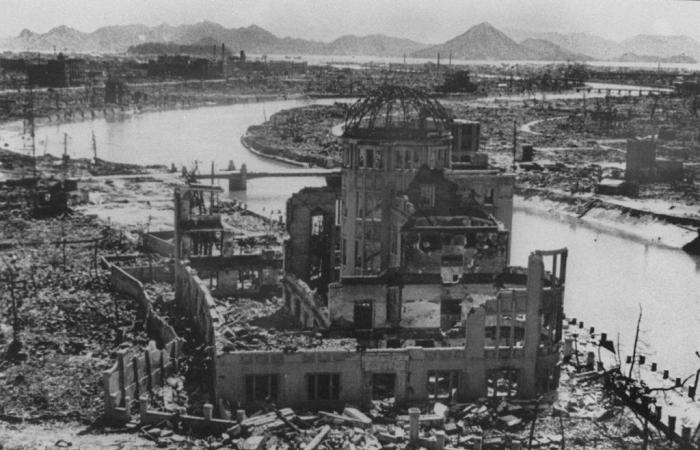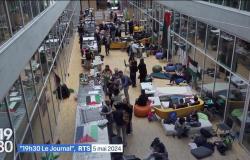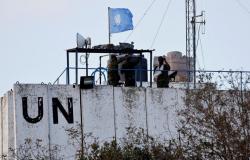A photo from September 1945 shows the remains of the prefectural industry promotion building after the nuclear bombing of Hiroshima, Japan.
AFP
Susumu Ogawa was five years old on August 6, 1945 when the United States bomb nearly wiped out this western Japanese city, and many members of his family were among the 140,000 victims.
“My mother, my aunt, my grandmother and my grandfather died in the atomic bombing,” Mr. Ogawa told AFP the day after the Nobel Peace Prize was awarded to the group of survivors Nihon Hidankyo .
Now 84, he himself has few memories, but the scraps he has gathered from surviving relatives and others have painted a hellish picture.
“All they could do was evacuate and save their lives, while they saw other people (perishing) in the inferno” immediately after the bombing, he said. “All nuclear weapons in the world must be abandoned. We know the horror of nuclear weapons, since we know what happened in Hiroshima,” he demands.
On this sunny Saturday, tourists and locals stroll through the Hiroshima Peace Memorial Park where “Little Boy” exploded with a force equivalent to 15,000 tons of TNT. Temperatures reached around 7,000 degrees. A firestorm sucked the oxygen out of the air and buildings burned for miles around. The skeleton of a building marked as ground zero for the “Little Boy” bomb and a statue of a girl with outstretched arms are poignant reminders of the devastation.
Kiyoharu Bajo, 69, who walks around the Hiroshima memorial, hopes the Nobel Prize will “further disseminate the experiences of survivors” and persuade others to visit the site. With the average age of the approximately 105,000 survivors, called hibakusha, still alive being 85, it is essential that young people continue to learn what happened.
“I was born 10 years after the atomic bomb was dropped, so there were many survivors around me. I felt this incident as something familiar to me, he explains. But for the future, it will be a problem.”
Three days after Hiroshima, on August 9, 1945, the United States dropped a second bomb on the southern city of Nagasaki, killing approximately 74,000 people.
The Nihon Hidankyo group was founded in 1956, with the mission of telling the story of the “hibakusha” and pushing for a world without nuclear weapons. Shigemitsu Tanaka was four years old in 1945. Today, the 83-year-old is co-president of Nihon Hidankyo and had almost given up hope that the group would win the Nobel, he told a packed news conference in Tokyo on Saturday.
“Our first members shared their experiences in Japan and abroad despite facing discrimination and their health problems. I think (their message) penetrated like rain,” he said.
“We heard the news on a plane. The words ‘Hidankyo won’ appeared on the screen and I shouted ‘Yes!'” he added. Terumi Tanaka, 92, another co-president, was 13 and in his hillside home when the bomb hit Nagasaki. “I wanted to be a soldier… Then I experienced the atomic bomb. Five of my relatives died,” he said. I saw the atrocities. There were dead bodies everywhere.” He welcomed the Nobel Prize but said the danger of nuclear war was very real, almost 80 years later. “I am a victim, but you could be too in the future,” he said.
Jiro Hamasumi’s father was at work when the bomb hit Hiroshima, a few hundred meters from the epicenter. He was killed. “I thought of my father (when I heard about the Nobel),” he said.
Hidankyo has had to stop its activities in 11 of Japan’s 47 prefectures, in part because of the aging of its members. “It’s hard, but I want to continue. I don’t want Nihon Hidankyo to cease its activities,” Mr. Hamasumi said.






